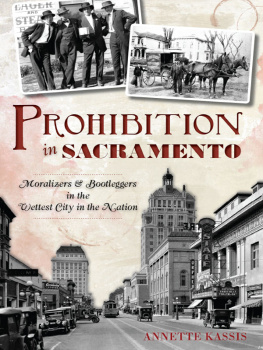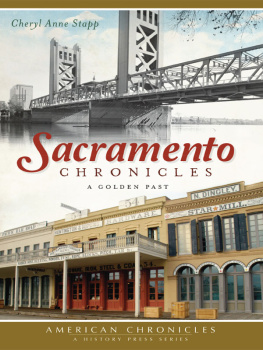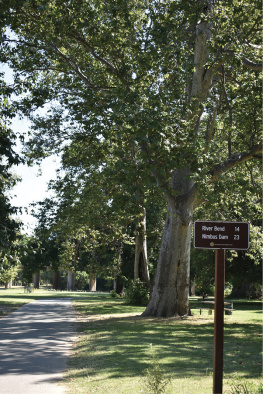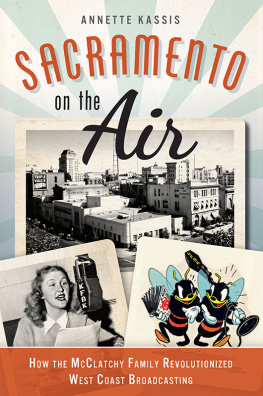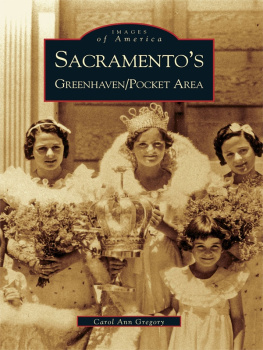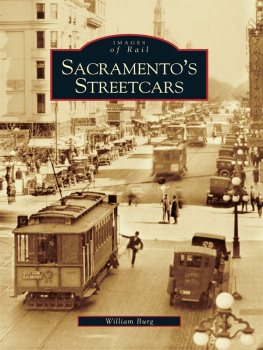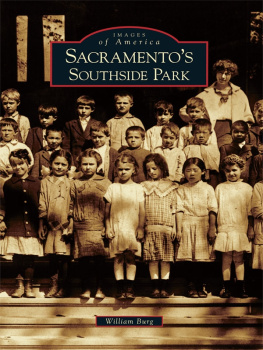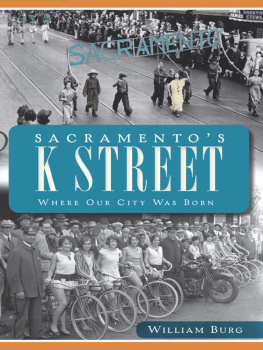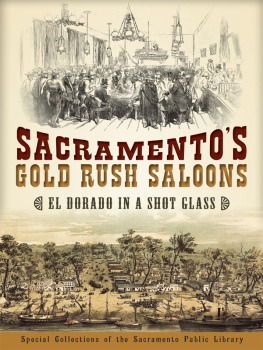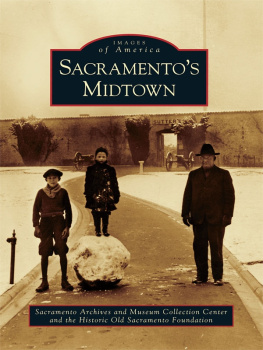

Published by American Palate
A Division of The History Press
Charleston, SC 29403
www.historypress.net
Copyright 2014 by Annette Kassis
All rights reserved
First published 2014
e-book edition 2014
ISBN 978.1.62584.621.1
Library of Congress Cataloging-in-Publication Data
Kassis, Annette.
Prohibition in Sacramento : moralizers & bootleggers in the wettest city in the nation / Annette Kassis.
pages cm. -- (American palate)
Summary: A history of prohibition in Sacramento--Provided by publisher.
print edition ISBN 978-1-62619-166-2 (paperback)
1. Prohibition--California--Sacramento--History. 2. Sacramento (Calif.)--History--20th century. I. Title.
HV5090.C2K37 2014
363.41097945409042--dc23
2014022664
Notice: The information in this book is true and complete to the best of our knowledge. It is offered without guarantee on the part of the author or The History Press. The author and The History Press disclaim all liability in connection with the use of this book.
All rights reserved. No part of this book may be reproduced or transmitted in any form whatsoever without prior written permission from the publisher except in the case of brief quotations embodied in critical articles and reviews.
For my mother, Gertrude Loften Stout, who taught me that every ten years a woman should do something very different with her life.
CONTENTS
ACKNOWLEDGEMENTS
I have many people to thank who were instrumental in the research and writing of this bookfar more than space permits.
For years now, the Center for Sacramento Historyour beautiful archive for the city and county of Sacramento as well as the repository of some wonderful private collectionshas been my favorite research haunt. I am deeply indebted to city historian Marcia Eymann and the entire staff, particularly Archivist Patricia Johnson, deputy city historian Dylan McDonald and photographs archivist Rebecca Crowther. Rebecca not only scanned all the images for this book, but she was kind enough to take my authors photo as well.
This book allowed me to meet some people I might otherwise not have had an opportunity to meet. Joe McNamara, with whom I became friends via Twitter, gave me the wonderful World War I song of the First U.S. Engineers expressing their frustration over Prohibition. He also introduced me to Sacramento icons Darrell Corti and Patrick Melarkey, both of whom shared wonderful stories for this book. John Ruden, someone I also met courtesy of McNamara, holds the distinction of mixing and serving me my first Prohibition-era cocktaila sidecar. Thanks, John, it was delicious!
Sacramento historian Clarence Caesar provided me with valuable insight into Sacramentos African American community during Prohibition. Ed Carroll, author of Sacramentos Breweries, was one of the first people I met when I began graduate school. Im very pleased that Im now able to cite his work in my own. Dr. Bob LaPerriere gave me the wonderful photos of medicinal alcohol bottles and prescriptions, courtesy of the fascinating Sierra Sacramento Valley Medical Society Museum of Medical History.
Friends and family bear a particular burden when someone undertakes a project like this. Not only do they have to hear about it in exhausting detail, but sometimes they get pressed into service as well. I would have thought my top two readersRoma Heerhartz and Frances Raewould have had enough after editing the Weinstocks book, but they willingly came back for more, and I offer my profuse thanks to both of them. Roma, my best friend and former business partner, volunteered to read and edit the initial and very clumsy version of the manuscript. Likewise Frances, one of my sisters, also volunteered to wade through the first draft and offer her critique and input.
My husband, Rich Kassis, volunteered to read the first draft as wellI consider that true love. And my son, Michael, and his girlfriend, Kayla Bettencourt, have been supportive from beginning to end.
For my mother, Gertrude Stout, I reserve special thanks. I had the rare privilege of attending Louisiana State UniversityShreveport with her when we were both working on our undergraduate degrees. It was in this setting that I learned to appreciate her wisdom and insight and that life holds new and rich experiences for as long as you are blessed to live it. It was also at LSU that she became more than my mothershe became my friend. It is to her that I dedicate this book.
Introduction
SACRAMENTO: THE WETTEST CITY?
You can shut your eyes and march into the first door you come to and call for a drink, and the chances are that you will get it.
Mark Twain on Sacramento, 1866
Was Sacramento, in fact, the wettest city in the nation during Prohibition? Doubtful, although it was certainly in contention and was described as such by some in law enforcement. No one, it seems, had set the parameters for what might constitute wettest: The most gallons of alcohol per capita seized during Prohibition? Perhaps the number of bootlegging arrests in a single year? How many prosecutions for alcohol-related offenses within a certain span of time? Truly, the label was subjective.
For the California drysthose who favored Prohibitionnorthern California posed a particular challenge with its large population of European immigrant groups for whom alcohol, particularly wine and beer, was a natural and significant part of both their cultures and religious practices. For the California wetsthose opposed to ProhibitionSouthern California was the thorn in their side. With the Los Angeles region settled largely by white Protestants lured west by land, the Southern California population of native born Americans brought with them a culture and religious practice that shunned alcohol. Across the country, nativists like those who settled in Southern California formed the core of the dry effort and became the organizers, speakers and boots on the ground of organizations like the Womans Christian Temperance Union (WCTU) and the powerful Anti-Saloon League (ASL).
Once the drys were successful in pushing through a constitutional amendment and Prohibition became the law of the land, efforts to enforce the law became the biggest challenge. Navely, many drys believed that people would fall in line and accept Prohibition simply because it was now the law. That, of course, was not the case.
California, with its 840 miles of coastline, presented a significant challenge to enforcement officers. And while northern California was largely unsympathetic to the dry cause, San Francisco and Sacramento were overwhelmingly opposed to Prohibition. In addition, both cities had water access. The SacramentoSan Joaquin Delta was a natural highway from the Bay Area to the capital city, and alcohol certainly found its way upriver. But Sacramento was also no stranger to large bootlegging operations, to sympathizers who would tip off a local alky cooker (still operator) or to local law enforcement officers who did not believe it was their place to enforce a federal law.
Alternatively, Sacramento was also home to its fair share of drys, many of whom associated alcohol with immigrants and associated immigrants with social problems. Prohibition in Sacramento came down largely along ethnic and religious lines, with the vast majority of drys being Protestantparticularly Baptist and Methodistand a large percentage of wets being associated with the Roman Catholic Church and with Judaism. With many of the drys also being nativists, the association of alcohol with the foreign born and their foreign churches proved useful in attracting those with larger social concerns to the dry cause. One of the ugliest chapters in Sacramentos Prohibition story is the swift and sudden appearance in 1922 of the modern Ku Klux Klan in the middle of a Palm Sunday service at the Westminster Presbyterian Church at Thirteenth and N Streets.
Next page
